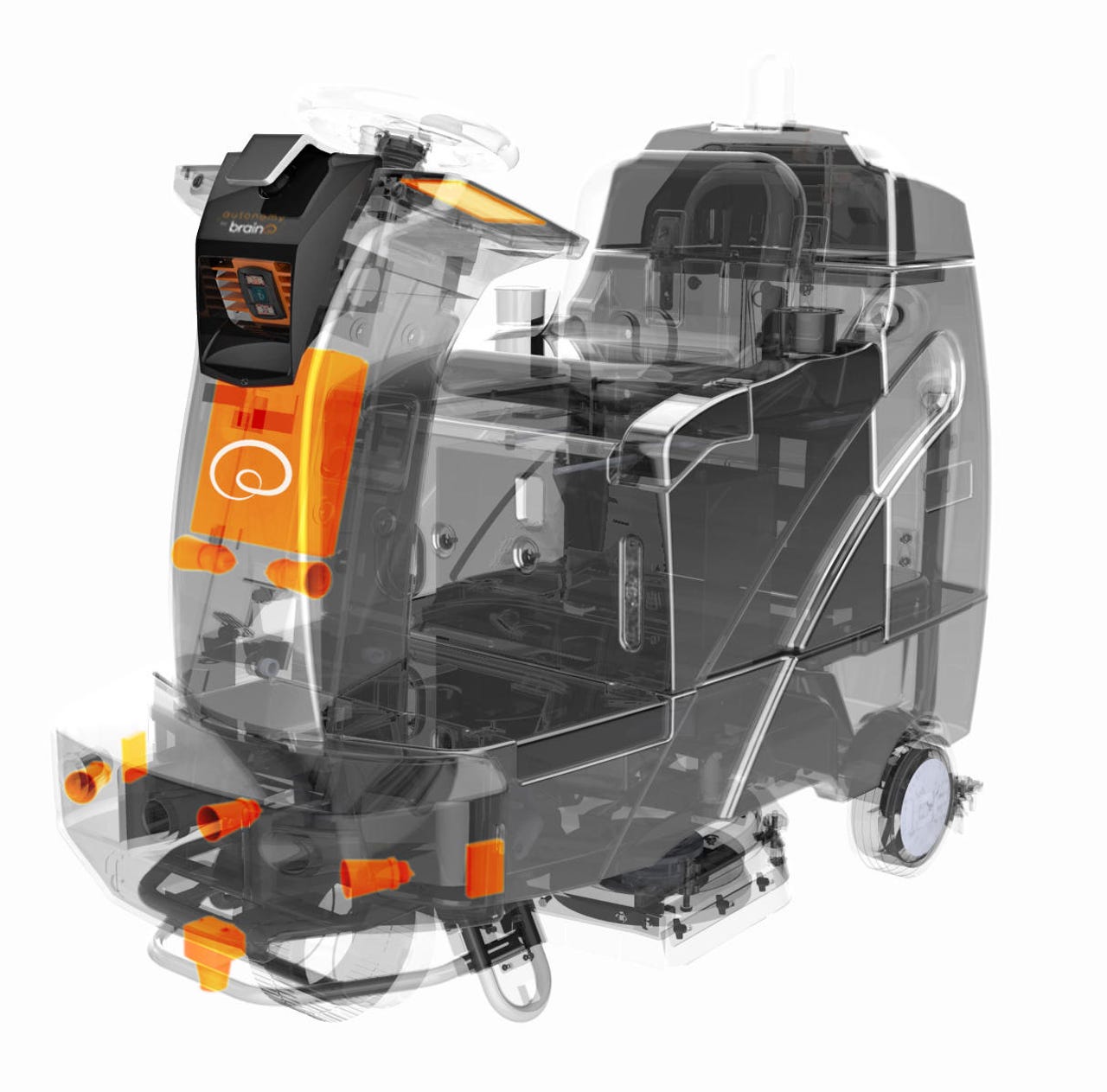Robotics developers are cleaning up during COVID-19


The pandemic has pushed automation to the forefront in many industries. Not surprisingly, cleaning and disinfecting robots in particular are seeing a big bump in usage.
One anecdotal example of this comes from Brain Corp, a company that makes an OS that powers autonomous mobile robots designed for cleaning and disinfecting. BrainOS-powered machines in retail locations in the U.S. saw usage spike 13.6% in March 2020 compared to the same month last year. By the same token, the types of businesses where these robots are being used are expanding. Besides hospitals and airports, grocery stores are major hotspot where cleaning plays a vital role. As stores are required to clean more frequently and deliver more cleaning coverage, Brain Corp expects autonomous floor care robots using BrainOS to provide 8,000+ hours of daily work—over 250,000 hours over the next 30 days.
To get a sense of the kind of adoption we're seeing of a new generation of cleaning robots, I reached out to Phil Duffy, Brain Corp's VP of Product for an exclusive conversation about the COVID-19-related changes we're seeing in the industry.
GN: How has the current crisis impacted adoption and usage of cleaning robots?
Phil Duffy: Since the outbreak of COVID-19, we have observed a significant uptick in usage across our BrainOS-powered fleet of autonomous mobile robots. During this time, grocers and retailers are looking to enhance cleaning efficiency while providing additional support for their workers. Comparing March 2020 to the same month last year, Brain Corp saw a 13.6% increase in average daily usage of BrainOS-powered robots in retail locations. In addition, average usage grew 13% in Q1 2020 alone. We expect this increase to continue as the value of automation and robotics comes sharply into focus.
The time saved by BrainOS-powered floorcare robots enables staff to provide the critical sanitation duties of surface areas and door handles to keep us all safe. Another important factor is that the autonomous robots also allow retailers to set and meet compliance standards when it comes to their daily cleaning routine. Via cloud-based operational metrics, they can accurately measure things like cleaning coverage and time spent cleaning per day. Those metrics provided by the robots enable store managers to track the work that has been done, compare that data against their compliance targets, and with that, optimize cleaning quality and consistency.
The real heroes of the COVID-19 crisis are the healthcare, retail, and janitorial workers that are risking their lives on the front lines to ensure we have the products and supplies we need. Brain Corp is committed to support their efforts by providing AI technology that powers advanced robotic equipment, to make them more effective at their jobs.
GN: Who have been the core users of the technology up to this point and where do you see the technology breaking into new sectors and finding new users?
Phil Duffy: Our first application was commercial floor care. Working with our OEM partners, such as Tennant, Minuteman, ICE, Kärcher, Nilfisk and SoftBank Robotics, we have deployed or enabled more than 10,000 robots across various industries, including grocery, retail, malls, airports, commercial buildings, and more. This represents the largest fleet of autonomous mobile robots (AMRs) operating in indoor public spaces in the world.
In November 2019, Softbank Robotics launched the BrainOS-powered Whiz, an autonomous vacuum sweeper, in North America. In April 2020, we announced OEM partners for a new autonomous material delivery robot, that offloads the task of hauling heavy carts in retail and other locations. Just this week, we announced our Series D funding, which will help us expand into new robotic applications beyond floor care, including shelf analytics, as well as support our manufacturing and sales efforts into new regions such as Europe and Asia-Pacific.
GN: Why are AMRs particularly well-suited to cleaning tasks? What are some of the underlying technologies that have converged to make these robots possible?
Phil Duffy: AMRs are exceptional for cleaning tasks because they provide consistent, measurable, and reliable work. Robots offload the time-consuming tasks of things like floor cleaning and pulling heavy inventory carts, enabling workers to devote their time to other high-value tasks during this pandemic such as sanitizing high-contact surfaces, restocking, supporting customers, and even taking a much-needed break. Even beyond a time of crisis, companies can better use robotics to deliver "accessible automation' and give valuable time back to their workers.
Our proprietary software, BrainOS, is a cloud-connected operating system for commercial autonomous robots that enables OEMs to build autonomous fleets at scale. The BrainOS platform delivers world-class safety, navigation, centralized data hosting, and on-demand analytics. This last capability is becoming increasingly important during the crisis as it enables cleaning crews to deliver "proof of work" metrics that floors were cleaned, or inventory was delivered.